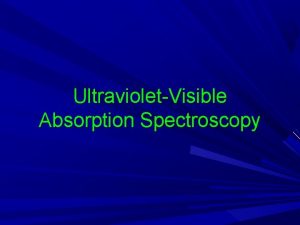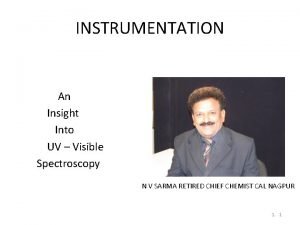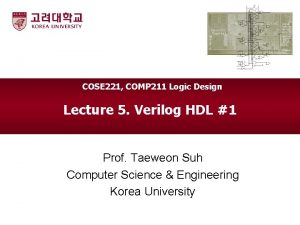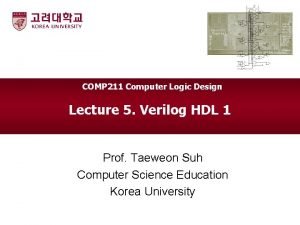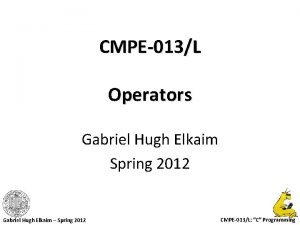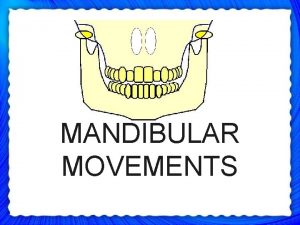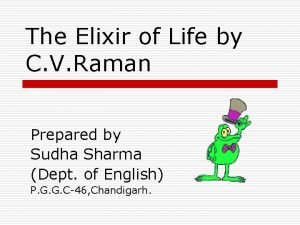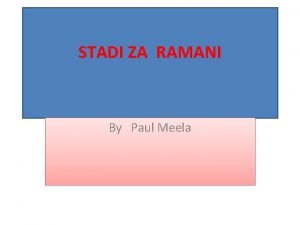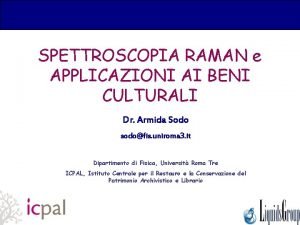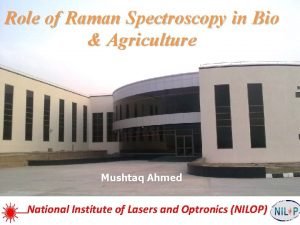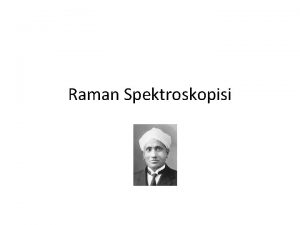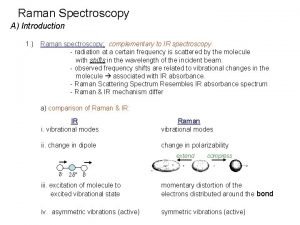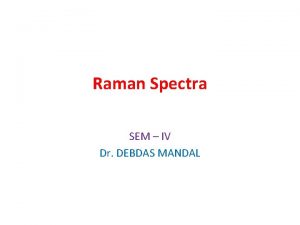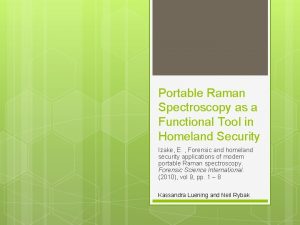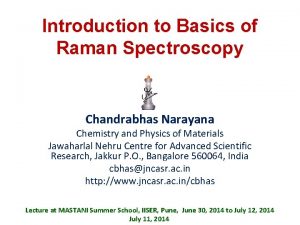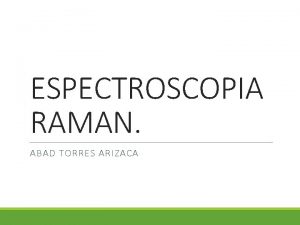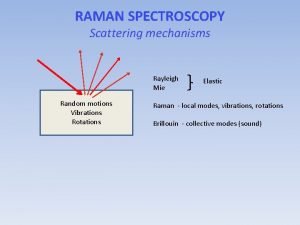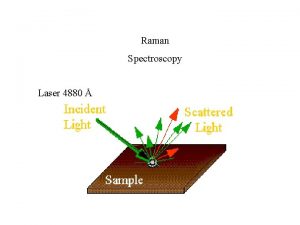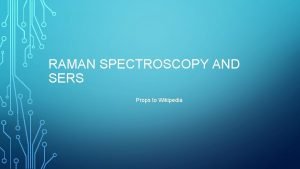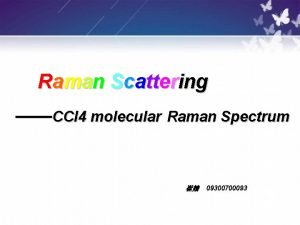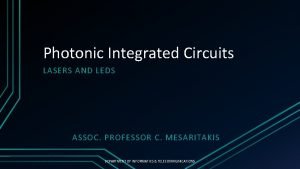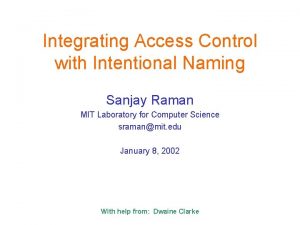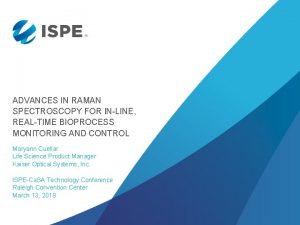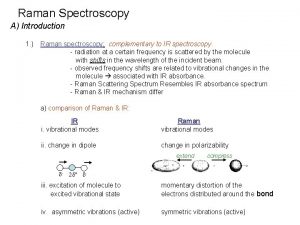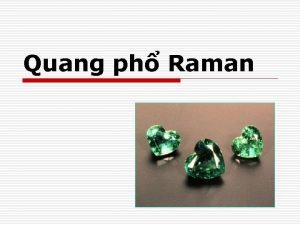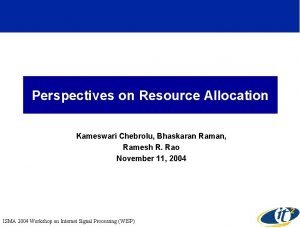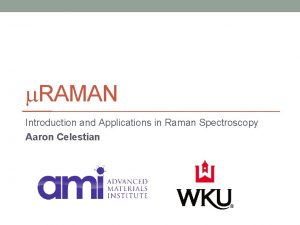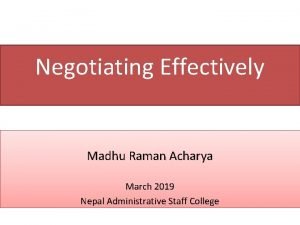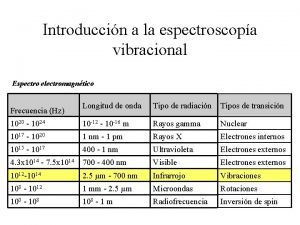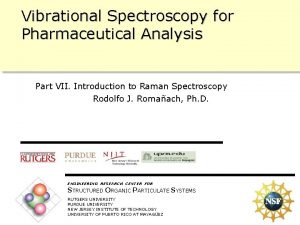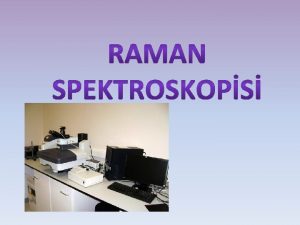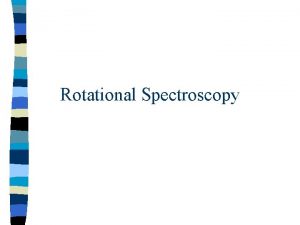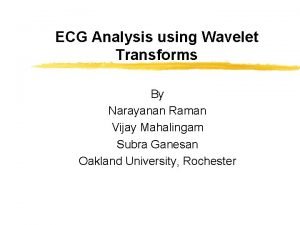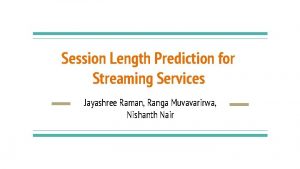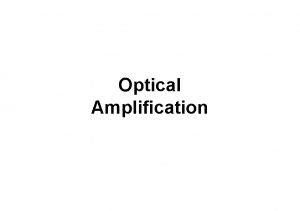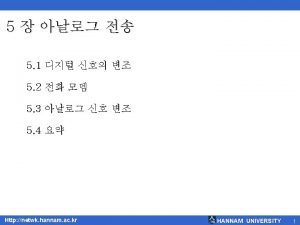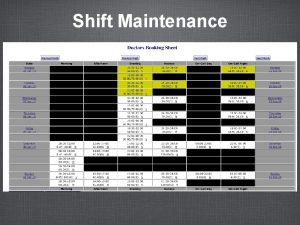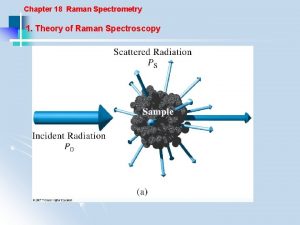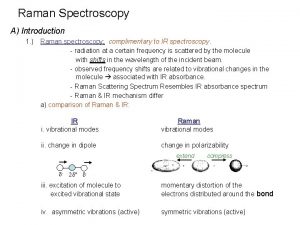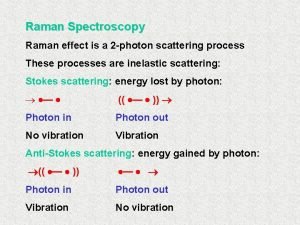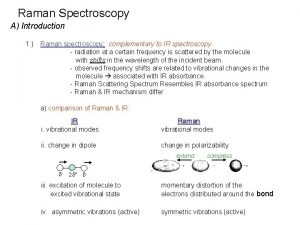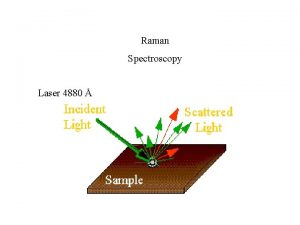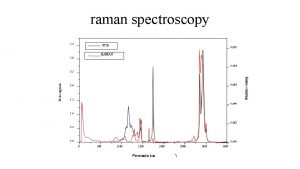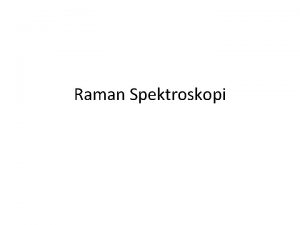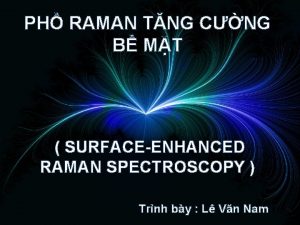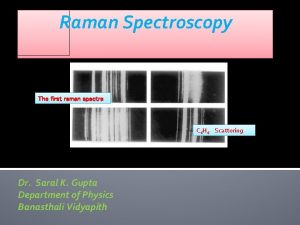Outline Thesis organization Chapter 2Straininduced Raman Shift Chapter











































- Slides: 43


Outline □ □ □ □ Thesis organization Chapter 2:Strain-induced Raman Shift Chapter 3:Carrier Mobility in Orthorhombically Strained Silicon Chapter 4: 2 -D Electrons in Strained Silicon Inversion Layers Chapter 5:Surface Effect on Strained Silicon Clusters Chapter 6:Strain Effect on Silicon Atomic Wires Summary and Future Work NTU GIEE Nano. Si. OE 2

Thesis organization Strain Type Phononlimited Mobility Chap 2 Biaxial & tensile on Si 1 -x. Gex Silicon Structure Hooke’s Law Modeling/ Simulation Bulk (diamond) Spring Equation MATLAB Chap 3 Orthorho mbic Bulk Mobility Bulk (diamond) MATLAB Chap 4 Biaxial & tensile on Si 1 -x. Gex Channel Mobility (2 DEG) Bulk (diamond) MATLAB Chap 5 Biaxial & tensile on Ge Cluster (diamond) Generalized Gaussian form (DFT) Chap 6 Distorted Cluster (relax Si 3) NTU GIEE Nano. Si. OE Tran. SIESTA-C (DFT+NEGF) 3

Thesis organization:Strain Type Phononlimited Mobility Chap 2 Biaxial & tensile on Si 1 -x. Gex Silicon Structure Hooke’s Law Modeling/ Simulation Bulk (diamond) Spring Equation MATLAB Chap 3 Orthorho mbic Bulk Mobility Bulk (diamond) MATLAB Chap 4 Biaxial & tensile on Si 1 -x. Gex Channel Mobility (2 DEG) Bulk (diamond) MATLAB Chap 5 Biaxial & tensile on Ge Cluster (diamond) Generalized Gaussian form (DFT) Chap 6 Distorted Cluster (relax Si 3) NTU GIEE Nano. Si. OE Tran. SIESTA-C (DFT+NEGF) 4

Strain-induced Raman Shift □ Raman spectra of a typical thin Si epilayer grown above a thick -x. Gex buffer layer on Si (001) substrate NTU GIEE Nano. Si. OE Si 1 5

Strain-induced Raman Shift Qualitative and quantitative prediction of Raman shift □ Simplified unit cell in Si epi-layer (instead of diamond structure) □ Backscattering geometry (only singlet is observed) [D. J. Lockwood, PRB, 1992] □ Forced to vibrate at a different force constant when strain is applied □ NTU GIEE Nano. Si. OE 6

Strain-induced Raman Shift Spring equation form of Hooke’s Law □ Frequency is related to the square root of U’s second derivative □ NTU GIEE Nano. Si. OE 7

Strain-induced Raman Shift U from Harrison’s total/cohesive energy (1972, 1981) □ U’s second derivative □ NTU GIEE Nano. Si. OE 8

Strain-induced Raman Shift Sqrt(k) vs. bond length □ Region of interest: 2. 35 ~ 2. 4 A (Si 1 -x. Gex, 0<x<0. 5) □ Compare with Raman data from published empirical equation □ a~200, a good prediction □ NTU GIEE Nano. Si. OE 9

Carrier Mobility in Orthorhombically Strained Silicon Vertical MOSFET □ Unstrained Si substrate □ Compressively strained Si. Ge pillar □ Orthorhombically strained Si sidewall layer □ NTU GIEE Nano. Si. OE 10

Carrier Mobility in Orthorhombically Strained Silicon NTU GIEE Nano. Si. OE 11

Carrier Mobility in Orthorhombically Strained Silicon □ Band splitting of orthorhombically strained silicon NTU GIEE Nano. Si. OE 12

Carrier Mobility in Orthorhombically Strained Silicon Electron and hole mobility of orthorhombically strained silicon □ Two-fold electron mobility enhancement at 20% Ge □ Two-fold hole mobility enhancement at 30% Ge □ NTU GIEE Nano. Si. OE 13

2 -D Electrons in Strained Silicon Inversion Layers Planar MOSFET □ Channel mobility modeled as 2 DEG □ NTU GIEE Nano. Si. OE 14

2 -D Electrons in Strained Silicon Inversion Layers Constant-energy ellipses (6 equivalent valleys) of Si conduction band □ Energy lineups of Si conduction band w/o tensile strain □ NTU GIEE Nano. Si. OE 15

2 -D Electrons in Strained Silicon Inversion Layers NTU GIEE Nano. Si. OE 16

2 -D Electrons in Strained Silicon Inversion Layers □ Airy function vs. SC wavefunctions for delta 2 and delta 4 valleys NTU GIEE Nano. Si. OE 17

2 -D Electrons in Strained Silicon Inversion Layers □ Airy function vs. SC subband levels for delta 2 and delta 4 valleys NTU GIEE Nano. Si. OE 18

2 -D Electrons in Strained Silicon Inversion Layers Phonon-limited mobility vs. effective field □ Mobility enhancement factor vs. substrate Ge content □ NTU GIEE Nano. Si. OE 19

Surface Effect on Strained Silicon Clusters □ Generalized Hooke’s Law -0. 77 NTU GIEE Nano. Si. OE 20

Surface Effect on Strained Silicon Clusters □ □ □ Horizontal fixed (5. 65 A); vertical tuned various α Searching for min E(α) Simulation building block: single silicon unit cell (diamond structure) 1 x 1 y 1 z 2 x 1 y 1 z, 1 x 2 y 1 z, 1 x 1 y 2 z represent two unit cells stacking up in x, y, z direction, respectively From 1 x 1 y 1 z (18 atoms) to 3 x 3 y 1 z (110 atoms) NTU GIEE Nano. Si. OE 21

Surface Effect on Strained Silicon Clusters Gaussian 03 and Gauss. View □ Model Chemistry [theoretical method/basis set]: BLY 3 P/6 -31 G(d) □ No min E(α) on the plot of total E versus α candidates for 1 x 1 y 1 z, 2 x 2 y 1 z, etc □ Squeezed (more negative α), total energy goes down □ NTU GIEE Nano. Si. OE 22

Surface Effect on Strained Silicon Clusters w. bare silicon (w. dangling bonds) □ Clusters w. silicon and valence hydrogen atoms (instead of dangling bonds) □ Min E(α) on the plot of total E versus α candidates for 1 x 1 y 1 z □ Min E(α) by (1) squeezed (more negative α), total energy goes up (2) a energy step (4. 8 e. V) for all α> -0. 77 □ NTU GIEE Nano. Si. OE 23

Surface Effect on Strained Silicon Clusters Valence hydrogen pair with angle of 54. 7 degree (instead of 109. 8) □ 1 x 1 y 1 z (1), 2 x 2 y 1 z (5), 3 x 3 y 1 z (13): yes □ NTU GIEE Nano. Si. OE 24

Surface Effect on Strained Silicon Clusters 0 -0. 11 -0. 12 -0. 15 -0. 22 -0. 24 -0. 26 -0. 28 -0. 4 V V V V V -0. 5 -0. 6 -0. 75 -0. 76 -0. 77 -0. 78 -0. 85 -0. 88 V V V -0. 95 -1. 0 -1. 1 -1. 5 -1. 6 -1. 7 -1. 8 -2. 0 Antenna check for 2 x 2 y 1 z NTU GIEE Nano. Si. OE 25

Surface Effect on Strained Silicon Clusters Only 1 x 1 y 2 z has antenna (same with 1 x 1 y 3 z, 1 x 1 y 4 z, etc) □ 3 x 2 y 1 z no, 2 x 2 y 2 z yes □ Square symmetry on x-y plane required? □ NTU GIEE Nano. Si. OE 26

Surface Effect on Strained Silicon Clusters 2 x 2 y 1 z minus one (3), 3 x 3 y 1 z minus one (11): yes □ 3 x 3 y 1 z minus two, 2 x 1 y 2 z, 3 x 1 y 3 z: no □ NTU GIEE Nano. Si. OE 27

Surface Effect on Strained Silicon Clusters □ □ □ Simulation of up to 9 unit cells Bare silicon clusters: unstable with dangling bonds With surface hydrogen: obey the same rule with bulk silicondeformation of shorten heights with α = -0. 77 by (1) squeezed, total energy goes up (2) energy step starting at α = -0. 77 Bond angle effect under deformation Near-square symmetry on one of the surface of the x-y plane NTU GIEE Nano. Si. OE 28

Strain Effect on Silicon Atomic Wires Molecule systems (equilibrium) coupled to electrodes and bias voltage is applied (non-equilibrium) □ Tran. SIESTA-C: Density Functional Theory (DFT) and Non-equilibrium Greens Function (NEGF) solving self-consistently □ Several approximation is adopted □ NTU GIEE Nano. Si. OE 29

Strain Effect on Silicon Atomic Wires Molecular system: Si 3 cluster (Si 3 atomic wire in zigzag fashion) □ Electrode: Li [He]2 s 1 closely resembles Au [Xe]4 f 145 d 106 s 1 □ Two-probe system: Si 3 cluster coupled to lithium electrode □ NTU GIEE Nano. Si. OE 30

Strain Effect on Silicon Atomic Wires □ Isolated Si 3 cluster (van der Waals radii; HOMO; LUMO) Relaxed Si 3 atomic wire (new MPSH LUMO as a channel) □ MPSH: Molecular Projected Self-Consistent Hamiltonian □ NTU GIEE Nano. Si. OE 31

Strain Effect on Silicon Atomic Wires □ I-V characteristic of relaxed Si 3 atomic wire NTU GIEE Nano. Si. OE 32

Strain Effect on Silicon Atomic Wires Transmission spectrum vs. MPSH eigenstates (red dot) □ T(E, Vb) at Vb= 0, 1, 2 V; LUMO closely associate with the peak □ NTU GIEE Nano. Si. OE 33

Strain Effect on Silicon Atomic Wires □ Three strain type CASE I n=1~4 (a 1, a 2, a 3, a 4) CASE II n=1~4 (m 1, m 2, m 3, m 4) CASE III n=1~2 (d 1, d 2) NTU GIEE Nano. Si. OE 34

Strain Effect on Silicon Atomic Wires I-V characteristic of strained Si 3 atomic wire (CASE I) □ 0 V ~ 1. 2 V: a 4 < a 3 < a 2 < a 1 < relax □ 1. 2 V ~ 2 V: relax < a 1 < a 2 < a 3 < a 4 □ NTU GIEE Nano. Si. OE 35

Strain Effect on Silicon Atomic Wires I-V characteristic of strained Si 3 atomic wire (CASE II) □ 0 V and 2 V: m 4 ~ m 3 ~ m 2 ~ m 1 ~ relax □ Between 0 V and 2 V (esp. 1 V): relax < m 1 < m 2 < m 4 < m 3 □ NTU GIEE Nano. Si. OE 36

Strain Effect on Silicon Atomic Wires I-V characteristic of strained Si 3 atomic wire (CASE III) □ 0 V ~ 2 V: d 2 < d 1 < relax □ NTU GIEE Nano. Si. OE 37

Strain Effect on Silicon Atomic Wires □ T(E, Vb) for CASE I, n=1~4 □ T(E, Vb) for CASE III, n=1~2 Relax NTU GIEE Nano. Si. OE 38

Strain Effect on Silicon Atomic Wires Current is obtained by Landauer-Buttiker formula □ Bias window: the energy region which contributes to the current integral (only positive part is shown) □ NTU GIEE Nano. Si. OE 39

Strain Effect on Silicon Atomic Wires Transmission spectrum within bias window at Vb= 1 and 2 V □ LUMO peak (1) bottom (2) move to center (3) bottom □ NTU GIEE Nano. Si. OE 40

Strain Effect on Silicon Atomic Wires MPSH eigenstates at Vb= 1 and 2 V □ LUMO with (1) HOMO/HOMO+1 (2) LUMO+1; HOMO/HOMO-1 (3) LUMO+2; HOMO □ NTU GIEE Nano. Si. OE 41

Summary and Future Work:Summary □ □ □ A simple spring model is developed to make qualitative and quantitative predictions of Raman peak red-shift in tensile strain silicon epi-layer. Phonon-limited bulk mobility under orthorhombic strain is calculated. Strong electron and hole mobility enhancement is observed. Phonon-limited electron channel mobility under tensile strain is calculated. Airy function is a fair approximation. Enhancement factor saturates at 20% Ge content. Surface hydrogen atoms is necessary to stabilize silicon clusters up to 9 unit cells in a morphology of shorten heights (α = -0. 77) under tensile strain. Near square symmetry is required for above observation. I-V characteristic of relaxed and strained Si 3 atomic wire is investigated. Bias window and MPSH eigenstates are helpful in understanding the changes in I-V characteristic in three strain conditions. NTU GIEE Nano. Si. OE 42

Summary and Future Work:Future Work Experimental confirmation □ More sophisticated molecular electronics with realistic metal electrodes □ NTU GIEE Nano. Si. OE 43
 Woodward fieser rules examples
Woodward fieser rules examples Bathochromic shift and hypsochromic shift
Bathochromic shift and hypsochromic shift Difference between arithmetic shift and logical shift
Difference between arithmetic shift and logical shift Bathochromic shift and hypsochromic shift
Bathochromic shift and hypsochromic shift Difference between arithmetic shift and logical shift
Difference between arithmetic shift and logical shift Difference between arithmetic shift and logical shift
Difference between arithmetic shift and logical shift Difference between arithmetic shift and logical shift
Difference between arithmetic shift and logical shift Difference between arithmetic shift and logical shift
Difference between arithmetic shift and logical shift Mandibular movement
Mandibular movement Quote sandwich example
Quote sandwich example In one sense water is the commonest of liquids
In one sense water is the commonest of liquids Raman letchumanan
Raman letchumanan Vitu muhimu kwenye ramani
Vitu muhimu kwenye ramani Armida sodo
Armida sodo Applications of raman effect in daily life
Applications of raman effect in daily life Fizik raman
Fizik raman Why are raman and ir complementary
Why are raman and ir complementary Difference between ir and raman spectroscopy
Difference between ir and raman spectroscopy Portable raman analyzer for hazmat and narcotics
Portable raman analyzer for hazmat and narcotics Low na
Low na Espectroscopia raman instrumentacion
Espectroscopia raman instrumentacion Raman wants to send a few photographs
Raman wants to send a few photographs Raman vs rayleigh scattering
Raman vs rayleigh scattering Selection rules for raman spectroscopy
Selection rules for raman spectroscopy Raman spectroscopy wikipedia
Raman spectroscopy wikipedia Raman scattering definition
Raman scattering definition Laser coherence
Laser coherence Sanjay raman mit
Sanjay raman mit Bioprocessing raman
Bioprocessing raman Why are raman and ir complementary
Why are raman and ir complementary Raman 1
Raman 1 Kameswari chebrolu
Kameswari chebrolu Use of raman spectroscopy
Use of raman spectroscopy Raman font
Raman font Acharyamarch
Acharyamarch Dispersion raman
Dispersion raman Raman spectroscopy disadvantages
Raman spectroscopy disadvantages Raman saçılması
Raman saçılması Rotational spectral lines
Rotational spectral lines Raman
Raman Narayanan raman
Narayanan raman Water the elixir of life by cv raman
Water the elixir of life by cv raman Ranga muvavarirwa
Ranga muvavarirwa Twsla
Twsla

